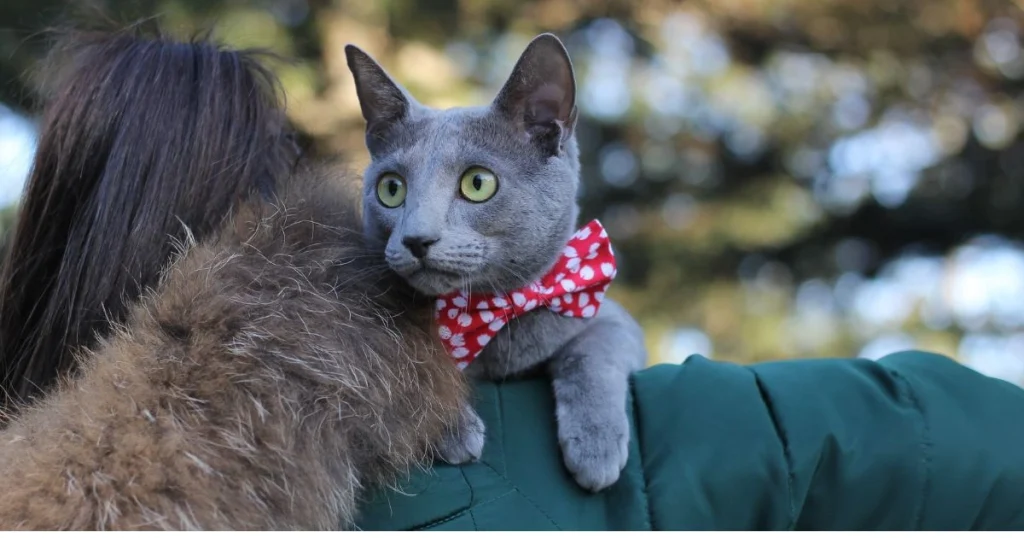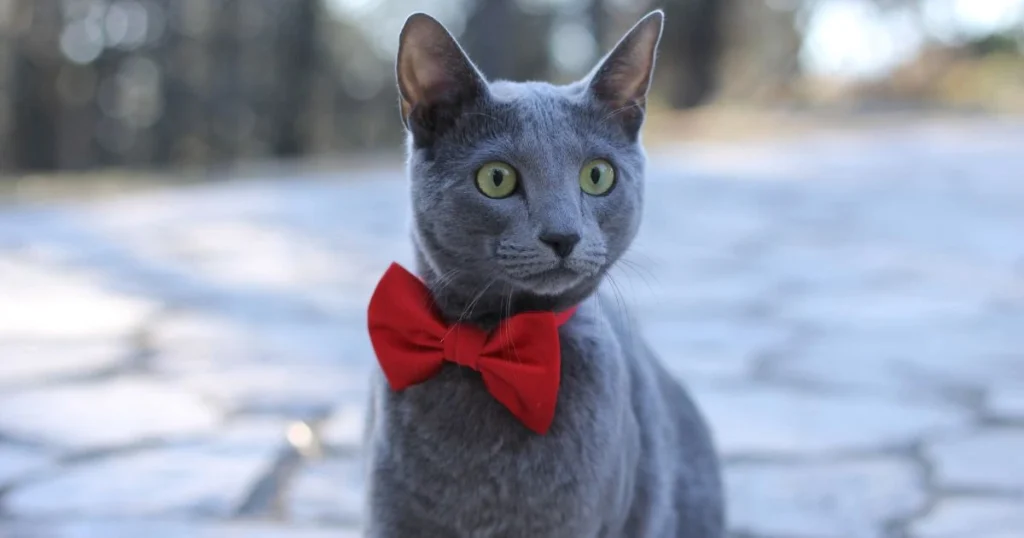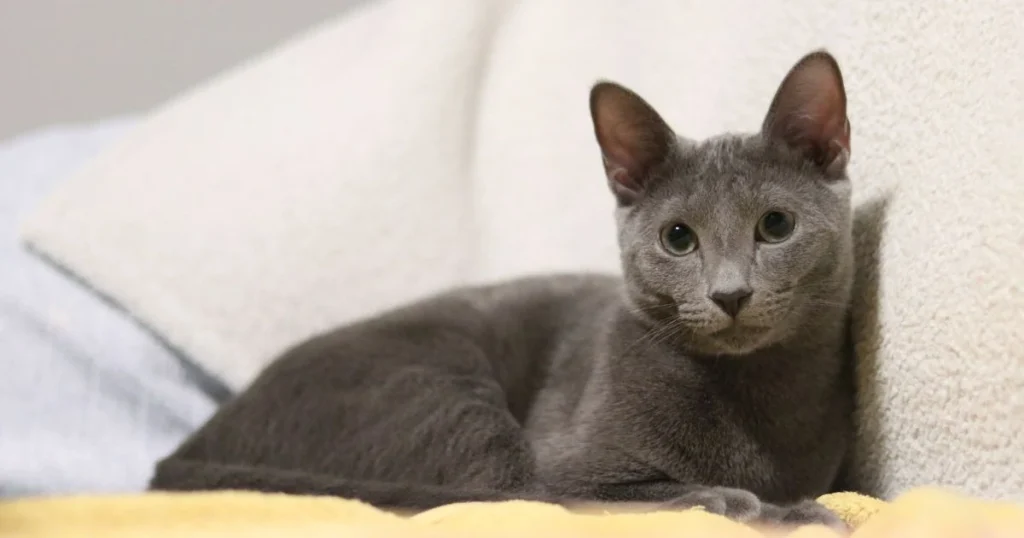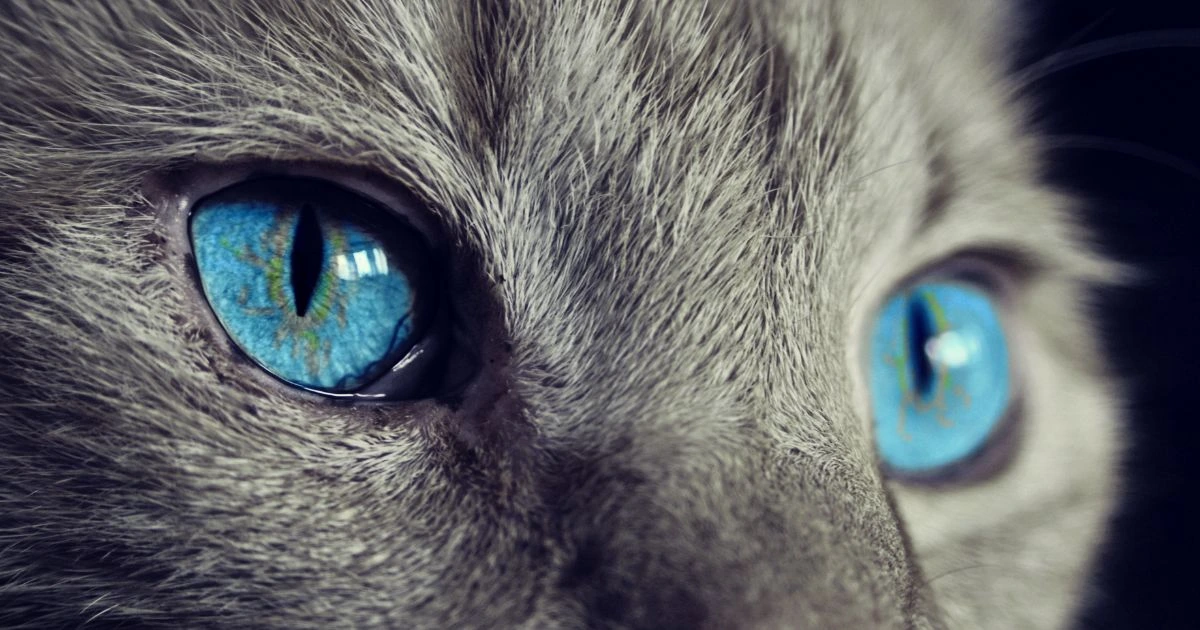Best Discover How Much A Russian Blue Cat Cost
Table of Contents
How Much Does a Russian Blue Cat Cost? Factors to Consider When Buying or Adopting
Thinking about getting a Russian Blue cat? The russian blue cat cost changes based on age, breeder reputation, and where you live. This guide helps you understand the cost of a Russian Blue cat in 2025. It prepares you for the investment before bringing one home.
Breeder prices start at $800 and can go up to $2,000+ for top-quality kittens. Adoption might be cheaper but is less common. This guide talks about why these cats are pricey. It focuses on their special traits and what you’ll need to care for them long-term.

Key Takeaways
- Russian Blue prices depend on lineage, breeder location, and kitten quality.
- Health guarantees and pedigree documentation affect the russian blue cat cost.
- These cats offer hypoallergenic benefits and low-shedding traits justifying their price.
- This guide covers adoption costs, breeder requirements, and lifetime care expenses.
- Consider long-term costs like vet care when evaluating how much is a russian blue cat worth to you.
Understanding the Russian Blue Cat Breed
The Russian Blue cat is known for its timeless beauty and special traits. Their history and characteristics explain why they are so expensive. This makes them a top choice in the pet world.
Origin and History of Russian Blues
These cats first appeared in 19th-century Russia, near Arkhangelsk. British aristocrats introduced them to Europe, where they were admired for their rarity and beauty. By the 1900s, they were a hit in cat shows, showing their luxury status. This history affects their current cost.
Distinctive Features of the Blue Russian
Three key traits stand out for this breed:
- Fur: A thick double coat with a unique silver-blue color
- Eyes: Large, bright green eyes that stand out against their sleek look
- Temperament: They are reserved but loving, forming strong bonds with their owners
| Feature | Key Detail |
| Coat | Water-resistant and low-shedding |
| Health | Generally robust with few genetic issues |
| Adaptability | Thrives in calm environments but can adjust to urban living |
Popularity in the United States
In the U.S., Russian Blues are among the top 20 breeds, according to the Cat Fanciers’ Association. Their hypoallergenic coat and calm nature make them popular with those who have allergies. This demand keeps their cost high, as breeders focus on their health and lineage. Their growing popularity shows a trend towards smart, easy-to-care-for pets.
Russian Blue Cat Cost: Price Ranges for 2025
Looking into how much is a russian blue cat shows prices vary a lot. This is based on where you buy and where you are. Here’s a look at what you might expect to pay in 2025:
Kitten Prices from Registered Breeders
Prices from registered breeders range from $800 to over $2,500. The cost depends on several things:
- Champion bloodlines (premium for show-quality cats)
- Health guarantees and vaccinations
- Breeder reputation and location
Adult Russian Blue Adoption Costs
Adopting an adult cat costs $200–$800. This includes spay/neuter services and vet checks. Adoption fees are lower but might not include pedigree info.
Geographic Price Variations
In cities like NYC or LA, breeder prices are higher ($1,500–$3,000). This is because of high demand and costs. In rural areas, you might find kittens for as low as $800. Adoption costs also go up in cities with high demand.
Look for local breeders and shelters to find a good deal. Make sure to check the breeder’s credentials and health records before buying or adopting.
What Influences Russian Blue Cat Prices?
Several factors shape the russian blue cat cost, making it important to understand what you’re paying for. Let’s break down the key elements that affect pricing:
- Age: Kittens typically cost more than adult cats. A young kitten from a reputable breeder may start at $1,200, while adopting an adult might save you up to 30%.
- Pedigree Quality: Cats with championship bloodlines or full documentation add value. Show-quality pets often cost 20–40% more than standard pets.
- Coat and Conformation: Flawless coat color and body structure increase prices. Minor imperfections lower the how much is a russian blue cat you’ll pay.
- Breeder Reputation: Top-tier breeders with decades of experience charge premiums for health guarantees and lineage records. Their cats may cost $500–$1,000 more than less-known breeders.
- Temperament Testing: Cats with certified gentle temperaments cost more. Breeders who screen for social behavior justify higher prices.
- Geographic Location: Urban breeders often charge more due to operating costs. Rural breeders might offer competitive rates without sacrificing quality.
Seasonal demand also plays a role. During peak breeding seasons or holidays, some breeders raise prices by 15–20%. Prioritizing traits like health history over flashy coats can help balance your budget. By focusing on factors that matter most to you, you can find a cat that aligns with both your preferences and the russian blue cat cost you’re comfortable with.

Breeder Reputation and Certification
Choosing a Russian Blue cat means looking at the breeder’s reputation. This affects both the russian blue cat cost and the quality of russian blue traits in your cat. Good breeders focus on ethics, which may cost more but ensures healthier, well-adjusted kittens.
Champion Bloodlines vs Standard Pedigrees
Elite breeders have kittens from champion bloodlines, priced at $1,500–$3,000+. These cats often have better russian blue traits, like thick fur and calm temperaments. Standard pedigrees start at $800 but might not have the same level of documentation.
| Type | Price Range | Key Features |
| Champion Bloodlines | $1,500–$3,000+ | Proven genetics, health records, CFA/TICA certification |
| Standard Pedigrees | $800–$1,500 | Basic pedigree certification, no championship lineage |
Questions to Ask Your Breeder
- Are both parents certified by TICA or CFA?
- What health screenings (HCM, PRA) have been done?
- Can I visit the breeding facility?
- What guarantees do you provide for genetic health issues?
Red Flags When Purchasing
- Prices below $700 – may indicate unethical practices
- Breeders refusing facility visits or health records
- No mention of genetic testing for common Russian Blue health issues
- Pressure to pay without meeting the kitten first
“A reputable breeder’s priority is the cat’s well-being, not just profit,” says the Cat Fanciers’ Association (CFA). “Always demand proof of certifications.”
Adoption vs Purchase: Making the Right Choice
Deciding between adopting or buying a Russian Blue Cat depends on what matters most to you. Adoption fees are usually $100–$500, which is much cheaper than the $800–$2,500+ for a breeder kitten. Shelters often have adult cats, which are already fully grown, while breeders offer kittens with health and lineage records.
- Adoption: It’s cheaper and helps a cat in need. Adult cats usually have health records, but you might know less about their early life.
- Purchase: Breeders provide kittens, champion bloodlines, and support. You get pedigree papers that show the cat’s size and health, but it costs more upfront.
Breed-specific rescues sometimes have purebreds, combining cost savings with some pedigree assurance. Ask shelters about health tests and if the cat is spayed or neutered. Breeders can talk about genetic health guarantees and the cat’s temperament.
Think about your budget and what you want: a kitten or an adult cat? Do you need health guarantees? Weigh these against the cost difference. Both paths offer companionship—choose what fits your values and budget.
Russian Blue Traits That Make Them Worth the Investment
Russian Blue cats are loved for more than their looks. They have russian blue traits that make life better. These cats have a special personality and practical benefits that meet certain needs. This makes their higher cost worth it.
Temperament and Personality
People love their calm and loyal nature. Unlike some breeds, Russian Blues are not too energetic. They are affectionate but also independent, making great companions.
They form strong bonds but also respect your space. This is perfect for those who want a cat that’s there but doesn’t bother you too much.
Intelligence and Trainability
- Quick learners: Master commands like “sit” or “come” faster than many breeds
- Problem-solving: Can open doors or discover hidden treats through curiosity
- Adaptability: Thrive in structured routines, reducing behavioral issues
Hypoallergenic Properties
Russian Blues are not completely allergen-free. But, they produce less Fel d 1 protein, a common allergen. Studies show that up to 40% of people with allergies may react less to them.
But, it’s important to test how you react before getting one.
| Trait | Benefit |
| Low-shedding coat | Minimal grooming maintenance |
| Quiet demeanor | Peaceful home environment |
| Adaptive intelligence | Easier integration into routines |
Russian Blue Lifespan and Long-Term Value
Thinking about owning a Russian Blue cat means looking at their lifespan and cost. They live for 15–20 years, making them a smart long-term investment. Their initial price is a small fraction of what you’d spend on shorter-lived breeds over time.
Health Considerations
These cats do well with regular care and avoid many health problems. Their strong build and good genes mean fewer vet visits. Keeping up with preventive care helps them stay active friends for many years.
Genetic Testing and Health Guarantees
Good breeders use science to protect your investment. They do important tests like:
- Polycystic Kidney Disease (PKD) tests
- Hypertrophic Cardiomyopathy (HCM) screenings
- Health guarantees for genetic issues
“Proper genetic testing ensures a healthier cat and a wiser financial decision,” says the Cat Fanciers’ Association.
The cost of a Russian Blue cat reflects these precautions. Here’s a comparison:
| Factor | Russian Blue | Shorter-Lived Breed |
| Initial Cost | $1,500–$2,500 | $800–$1,500 |
| Typical Lifespan | 18 years | 12 years |
| Annual Cost Spread | $83/year | $125/year |
These numbers highlight how their long lifespan reduces yearly costs. Choosing certified breeders with health guarantees ensures both your heart and wallet stay safe.
Russian Blue Cat Size and Care Requirements
Russian Blue cats weigh between 7-12 pounds, fitting into the medium size category. This russian blue cat size means they need a diet similar to other mid-sized cats. This helps keep food costs down. Their size and energy level also mean they don’t need expensive exercise gear.
Some russian blue traits make their care easy. Their thick double coat only needs weekly brushing to manage shedding. This saves money on professional grooming. They also groom themselves well, keeping clean without extra work from their owners. Their coat is hypoallergenic, which means less dander in the home.
“Russian Blues are self-sufficient yet responsive to routines,” notes the Cat Fanciers’ Association. “Their calm demeanor makes training straightforward.”
Behavioral russian blue traits also help save money:
- They have strong litter box habits, reducing the need for odor control products
- They scratch less, saving money on furniture protection
- They are quiet, which means no need for expensive home adjustments to reduce noise
| Care Aspect | Russian Blue Trait | Cost Savings |
| Grooming | Natural coat maintenance | Avoids $100+/month grooming bills |
| Space Needs | Adapts to apartment living | No large home premium |
| Health | Low genetic disorder prevalence | Reduces emergency vet expenses |
Monthly costs for premium diets are around $20-$30, similar to non-pedigree cats. Their moderate energy means standard cat trees are enough, avoiding the need for expensive exercise gear. These traits make their care easy and affordable, without sacrificing their high breed status.
Initial Setup and Ongoing Expenses
Getting a Russian Blue cat is more than just the russian blue cat cost you see online. You need to budget for supplies, health care, and lifestyle needs. This ensures you’re ready for the long haul. Here’s what you should expect:
Essential Supplies for Your New Cat
Before your cat comes home, get these basics ready:
- Litter boxes ($20–$50) and safe, unscented litter
- Scratching posts ($30–$100) to save your furniture
- Carriers ($30–$80) for vet trips
- Food/water dishes ($15–$40) and top-notch kibble
- Cat beds ($20–$60) and fun toys ($20–$50)
Initial costs can range from $150–$400, depending on your choices.
Annual Expenses to Plan For
Yearly costs depend on your cat’s needs and where you live:
- Health care: Routine vet visits, vaccines, and flea control cost $200–$400 a year.
- Food and litter: High-quality food costs $300–$600 yearly, and litter is $150–$250.
- Enrichment: Toys and enrichment activities cost $50–$150.
- Boarding: Emergency pet sitting can be up to $500, but many owners skip this.
These costs add up to $700–$1,900 a year.
Insurance and Financial Protection
“Insurance isn’t mandatory, but it can save you from unexpected vet bills,” says Dr. Lisa Morgan, a certified feline specialist at Cat Wellness Centers.
Insurance for Russian Blues costs $100–$600 a year. It’s not required but can protect against accidents or illnesses. Look at plans from Trupanion or Petplan to find the right one for your budget.
Understanding these costs helps avoid surprises. Knowing how much is a russian blue cat to own long-term prepares you for this rewarding journey.

Comparing Russian Blues to Other Premium Cat Breeds
When we look at the russian blue lifespan and value, we see it stands out. Let’s compare costs and traits:
| Breed | Price Range | Lifespan | Health Profile | Temperament |
| Russian Blue | $800–$2,500 | 15–20 years | Low inherited issues | Calm, social |
| Bengal | $1,500–$5,000 | 12–16 years | Prone to heart disease | High energy |
| Maine Coon | $800–$2,500 | 12–15 years | Spinal issues | Playful, vocal |
| Sphynx | $1,500–$6,000 | 10–15 years | Skin sensitivities | Clingy, active |
“The blue russian breed’s combination of affordability and longevity sets it apart from higher-cost breeds with shorter lifespans.”
Russian Blues have a big advantage in russian blue lifespan. They need less care than Sphynx cats and are more laid-back than Bengals. Their calm nature is a great balance to the high energy of some breeds.
- Cost vs. Longevity: Russian Blues give 10+ years of friendship, more than some breeds.
- Health Edge: They have fewer health problems, saving on vet bills.
- Temperament: They are less demanding than some breeds that need constant activity.
For those wanting a stable, hypoallergenic pet with a calm nature, the Russian Blue is a great choice. Its price is fair for its long-lasting companionship.
Conclusion: Is a Russian Blue Cat Worth the Cost?
Getting a Russian Blue cat means looking at both the initial cost and the long-term benefits. Their russian blue lifespan of 15 to 20 years makes the first expense last for many years. They are smart and have a coat that’s good for people with allergies, which are big pluses.
These cats do well in stable homes and need little grooming. This makes their care easy. They are also healthy, which means less money spent on vet bills. Prices range from $800 to $2,500, but their long life makes them a great value.
Think about whether their calm nature fits your home. Can you afford the adoption fee or the cost from a breeder? Their long life requires a big commitment, but they offer constant companionship. Compare their cost and care to other breeds.
If you like their quiet nature and hypoallergenic fur, it might be worth it. Consider their initial cost against the years of loyalty and health they bring. Whether a Russian Blue is right for you depends on how their traits and long life fit your family’s needs.
FAQ
How much is a Russian Blue cat?
A Russian Blue cat’s price varies from $800 to $2,500. This depends on the cat’s age, pedigree, and the breeder’s reputation.
What is the lifespan of a Russian Blue cat?
Russian Blues can live for 15 to 20 years. They make great long-term pets for their owners.
What are the distinctive traits of a Russian Blue?
Russian Blues have a soft double coat and bright emerald green eyes. They are also known for being affectionate and gentle. This makes them beautiful and loving pets.
What is the typical size of a Russian Blue cat?
Adult Russian Blues weigh between 7 to 12 pounds. They fall into the medium size category of domestic cats.
Are Russian Blue cats hypoallergenic?
Yes, Russian Blues are often considered hypoallergenic. They have lower levels of Fel d 1, which can cause allergies in some people.
What factors influence the price of a Russian Blue cat?
Several factors affect the price. These include the cat’s age, pedigree quality, breeder reputation, and color variations.
Can you adopt a Russian Blue cat?
Yes, you can adopt a Russian Blue. It’s less common, but you can find them through shelters or breed-specific rescues. Adoption fees usually range from $100 to $500.
What are the care requirements for a Russian Blue?
Russian Blues need moderate exercise and weekly grooming. They also require a balanced diet. This makes them relatively easy to care for compared to other breeds.
What initial expenses should I expect when getting a Russian Blue?
Initial costs include supplies like a litter box, scratching post, and food. These can cost $150-$400. You also need to consider the adoption or purchase price.
How do Russian Blues compare to other premium cat breeds?
Russian Blues are priced reasonably and have favorable traits. They live long, have lower health risks, and have a balanced temperament. This makes them a good choice among premium breeds.

